Warren Feeney – 11 December, 2013
What were the successes of TEZA's week in New Brighton? It generated positive social activity (meetings, conversations, collective action and collaborative art works), into a vital community space, drawing attention to the ‘usefulness' of an area of New Brighton still regarded as out of action.
Christchurch
Richard Bartlett, Tim Barlow, David Cook, Phil Dadson, Stuart Foster, Mark Harvey, Simon Kaan, Kerry Ann Lee, Kim Paton, Kura Puke, Tim J. Veling, Te Urutahi Waikerepuru, Ron Bull Jnr, Priscilla Cowie, Heather Hayward, Kiwi Henare, Kim Lowe, Nathan Pohio, Te Huirangi Waikerepuru and Kayla Ward
TEZA
24 November - 1 December 2013
Why does it seem as though the arts are assuming greater public ambitions to connect with the wider community, making numerous assertions that creativity is central to the wellbeing of the country’s population and even capable of generating social change? In March 2013, curator Mark Amery observed that the highlight of the Auckland Arts Festival resided in its Pacific arts programme which reflected something of the identity of the city’s communities. In August, curator of Pacific art Ema Tavola echoed these sentiment at the Pacific Arts Association 11th International Symposium in Vancouver. Her commitment to the arts in Auckland and Manukau was founded upon her desire to ‘affect change and contribute to the social development of Pacific people.’
More recently, the Auckland Art Gallery’s Freedom Farmers: New Zealand Artists Growing Ideas, has positioned the country’s artists as local ‘leaders,’ and the Christchurch Art Gallery held a successful fundraising campaign to acquire Michael Parekowhai’s On First Looking into Chapman’s Homer, describing it as a work that symbolised the ‘resilience and strength of the people of Christchurch.’ Ironically, the attention accorded to art as an agent for wider social and community engagement gains prominence as paintings by New Zealand artists continue to increase in financial prestige. In November, Art + Object achieved a record price of almost $230,000 for a work by Patrick Hanly and a painting by Bill Hammond auctioned at Webbs reached close to $330,000.
In the last week of November in Christchurch the belief in art as an agent for social change assumed centre stage through TEZA (the Transitional Economic Zone of Aotearoa), a seven day public arts project in the suburb of New Brighton. TEZA represents an ambitious agenda based on community focussed-arts projects, curated by Wellington-based Mark Amery and Sophie Jerram, possibly best known for the series of public interventions/arts projects that have made up Letting Space since 2010. TEZA is clearly concerned with art as a catalyst for well being and social democracy. Amery and Jerram are proposing that the ‘economic systems by which we are governed needs to change, and we are part of that change.’
In terms of the degree of reflection and criticism that the art community has tended to direct towards itself in New Zealand, TEZA is relatively high in provocation. It demands that the basis on which art has been cultivated and contexturalised through the community needs to change. Such intentions raise important questions about the status of the art object as product, whether perceived as public art gallery trophy or auction house commodity. Amery and Jerram direct their interests to alternative measures to value the arts and community; meaningful communication between individuals and groups, well being, happiness and biculturalism.
If decisions about public art - which artworks are chosen for community consumption and where they should be places - is usually made by a select group of people for the assumed benefit of the community, then TEZA argues the process should be reversed. TEZA aims to instigate public art through artists meeting with communities, listening, talking and responding through the realisation of works that articulates community needs. In doing so, it argues in favour of the experiences and knowledge of all communities, challenging a global homogenization of the arts and its potential for art to become increasing disconnected from authentic human experience.
It is impossible not to make connections between TEZA‘s agenda and performance and post object art from the 1970s - art situated beyond the constraints of the art gallery, the denying of the supremacy of the art object and a shift of attention to the arts as an agent for changes in thinking and acting. Such beliefs were fundamental to the work of artists like Bruce Barber, Phil Dadson, Di Ffrench and Nick Spill.
So it seemed more than appropriate that, as a contributing artist to TEZA, Dadson brought together New Brighton residents and artists for Bicycle Choir, pitching harmonies and cycling in and around the seaside shopping precinct, once the hub of Saturday shopping in Canterbury. Bicycle Choir represented an economy of means in an arts project centred upon community participation, generating joy and happiness. Its optimism and irrationality suggested that Dadson and TEZA could be on to something. Strange alien sounds that seemed so right in a virtually abandoned and ruined shopping precinct, disclosed that whatever its state may be, New Brighton mall was still a place for community activity.
TEZA was certainly prepared to make the necessary effort to build relationships with the residents of New Brighton. Performance artist Mark Harvey facilitated a series of group projects. Harvey’s Productive Promises provided practical measures to raise spirits and confidence, including the removal of rubbish accumulating on vacant lots in the mall through a working bee, shifting it from private sites to public space for council staff to collect. In response to requests from residents, Harvey also coordinated a street march declaring ‘We Love New Brighton,’ manifesting the feelings of residents experiencing a sense of ongoing neglect from civic leaders for a suburb in which earthquake damage and liquefaction has seen significant population flight and the Red zoning of suburbs like Bexley.
More structured in its delivery, the University of Canterbury’s Place in Time’s Freeville Project was a collaborative undertaking between Tim Veling and David Cook, involving school students from Freeville School, and Bayley Corfeld, Hannah Watkinson and David Draper. This project considered how the Freeville School’s location might appear, many years from now. Freeville School is to be abandoned in 2016, with classes and staff integrated into North New Brighton and Central New Brighton schools. Veling provided students with basic tuition in photography and composition, documenting the school’s buildings and playing fields, and enlarging the images and cutting and pasting drawings of how they imagined a future for the site, into their work. These were displayed over two adjacent walls in New Brighton mall, acting as installation, public work of art and checker-board response by numerous individuals to events in their community. Coordinated through Veling, an artist and photographer versed in community-centred exhibitions, the Freeville Project put forward a convincing argument for successful collaborations between the arts and the local neighbourhood. It maintained a credible degree of wonder and enchantment, making visible a sense of optimism, loss and memory. Like Dadson, Veling’s ability to deliver successful outcomes on numerous levels for both residents and the arts made TEZA, an idea worth taking seriously.
Some residents however, didn’t agree that art was something that was necessarily relevant to their lives - too serious for its own good, pretentious and certainly not for the locals. Such opinions emerged at one evening discussions between artists and residents. Yet, Amery and Jerram appeared to anticipate such responses, even providing the opportunity for such conversations. TEZA felt like an arts project that was not afraid to admit that it had an agenda that was an ever evolving work in progress - in the act of continually discovering how to deliver its aspirations.
What were the successes of TEZA‘s week in New Brighton? It generated positive social activity (meetings, conversations, collective action and collaborative art works), into a vital community space, drawing attention to the ‘usefulness’ of an area of New Brighton still regarded as out of action.
Such outcomes were always going to depend on the skills and knowledge Amery and Jerram brought to this project and the particular experiences of artists like Harvey, Veling and Dadson. Did it matter that a number of projects appeared to lack the ‘finish’ or refinement of the kind of artworks that make it into traditional gallery spaces? Not if one of TEZA‘s outcomes is to shift attention away from the venue of the gallery and into the community with a concern to address social and political change - within such a context, the cultivation of the object tended to become less significant that the outcomes it generated
Yet, isn’t this too frequently one of those reoccurring challenges with community-based art? That the kind of skill in making and complexity of thought that generally typifies serious art is traded off against the goodwill felt by all for the wider community? Isn’t serious art essentially about a quality of ideas, and the revelation of complex and often opened-ended questions and ideologies? Community arts projects tend to work best when attention is centred upon giving primacy to the expression of an idea through some form of collective action rather than via the skilful crafting of an object - one rich in the possibility of ideas.
And just because a community may hold a shared belief does not necessarily mean that it is a sound principle. It was disappointing to hear one New Brighton resident state that TEZA seemed like the next stage on from the Occupy Christchurch movement in 2010. Didn’t Occupy Christchurch vanish because it involved inhabiting a site without strategy or outcomes? The observation that TEZA might be the next step in the occupation of public spaces, revealed little awareness of its comprehensive ambitions for serious art and the wider community, or an understanding that advocacy and action for social change can also be successfully realised through less public displays of activity. For example; through cumulative and more discrete long-term strategies.
In expressing such concerns, TEZA‘s agenda as successor to performance and post-object practice also needs to be questioned. Is the Transitional Economic Zone of Aotearoa‘s call for action and community engagement an agenda a little too closely aligned with the attitudes of seventies counter-culture protest? TEZA appears to demarcate much of its position from an historical cultural framework, and in doing so, identifies perceived limitations that it maintains still exist in the arts. In particular, the predominant role occupied by galleries and the perceived gap between such institutions and the public. In reality, over the past twenty years, other models of beneficial relationships between the arts and wider community have emerged, locally and globally, that also argue for a quality of life and the empowerment of the individual.
For example: Melbourne curator Kevin Murray’s focus upon object-based arts practice in Australasia, Asia, India and South America, provides an alternative and complementary paradigm to TEZA’s propositions through the practice of contemporary jewellery. Murray has facilitated and curated numerous exhibitions and arts projects with artists and craftspeople, encouraging a shift away from the use of limited precious materials for jewellery and objects. These have included; Australian jeweller Mark Verwerk spinning plastic bags to create material for rings, South African artist, Beverly Price using magazines and found metals, Queensland jeweller, Roseanne Bartly transforming found ice cream sticks into necklaces and New Zealand artist Renee Bevan, employing old CD’s as materials for jewellery.
All represent an international movement within contemporary craft practice that is environmentally sound, (recovering and assigning value to discarded objects), and shifts attention from precious materials to precious ideas about the artist as maker of precious objects, also highlighting the question of how we measure quality in our lives. Equally, numerous artists and object makers support and cultivate the communities that often sustains their work. Working in Rwanda, German artist Martina Dempf sources woven grass components for her jewellery from Rwandan women, also championing their practice to market their own work. In all such actions, and in the notion of objects for adornment, as gifts or protective charms, such artists cultivate beneficial and supportive community relationships at numerous levels; the use of recycled materials, the collaborative processes of design and making, and the affordability and accompanying accessibility of their practice to the wider public.
Murray describes this shift as sustaining the dream of a common wealth, one that benefits the ‘precious wealth of the common.’ It is a description of the kind of outcomes that TEZA shares, yet critical to Murray’s curatorial practice is the authority and integrity of the art object - one that retains its place within an arts infrastructure that also encompasses the gallery networks.
TEZA’s agenda may currently be too closely founded upon what it does not advocate for: The status accorded to the art object, the white cube space of the gallery, and perceptions about the elitist nature of the arts and its failure to connect meaningfully with the public. I like the premise of TEZA as a work in progress, initiating projects and testing how best to deliver an admirable agenda for the arts. I would trust however, that its generosity for community engagement also encompasses existing arts infrastructure, and the ways in which they often equally, build successful relationships with communities.
Warren Feeney
Recent Comments
Tim Barlow
Ralph, the lyrical conjurer of theory, politics and place! a sensual repartee of artist-run and speak back, laugh in ya ...
Ralph Paine
III. In any case, nor was I suggesting that the artist run spaces of Auckland are/were in the process of ...
Ralph Paine
II. Okay then, SPECTACLE=SPECULATION. Art has become a hyper-commodity. Yeah, we’re all tangled up in this, tangled up in the ...
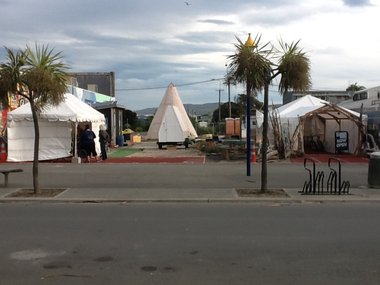

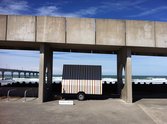



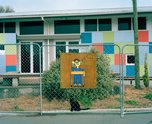



 Two Rooms presents a program of residencies and projects
Two Rooms presents a program of residencies and projects Advertising in this column
Advertising in this column

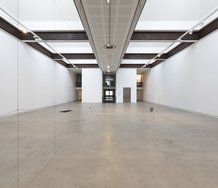
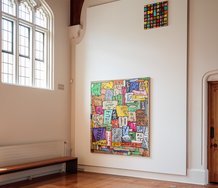
This Discussion has 41 comments.
Comment
Barry Thomas, 9:58 a.m. 13 December, 2013 #
http://muir.massey.ac.nz/bitstream/handle/10179/3041/01_front.pdf?sequence=2
Barry Thomas, 10:21 a.m. 13 December, 2013 #
here is the link to the full thesis... http://mro.massey.ac.nz/handle/10179/3041
Richard Bartlett, 12:44 p.m. 13 December, 2013 #
Thanks Warren for your incredibly generous and thoughtful review, and your support and participation in the event. The questions you raise are in my opinion exactly the right ones; I look forward to working these out as the TEZA project enters the canon of NZ Public Art.
I thought it might be useful to highlight one comment you made, because your interpretation was so divergent to mine:
You said: "It was disappointing to hear one New Brighton resident state that TEZA seemed like the next stage on from the Occupy Christchurch movement in 2010. Didn’t Occupy Christchurch vanish because it involved inhabiting a site without strategy or outcomes?"
This caught my attention because that comment from New Brighton resident Richard 'Pops' Baker was my personal highlight from the entire event! In my role as discussion facilitator, (and former Occupier myself), I expressly intended to create an experience for people that was parallel to what we experienced at Occupy.
Pops was not celebrating some notional achievements of Occupy as measured in strategic outcomes, he was simply saying that he found Occupy to be profoundly affective, and that TEZA provoked similar feelings in him.
Ali Bramwell's point that art institutions can be suspicious of love is relevant here; I believe people engage with art _because it makes them feel things_, and we don't need to hide behind analysis, critique or objectivity to admit it! Good art utilises our sensory pathways to take us to sublime destinations that are inaccessible by other means.
When asked for their feelings about art in general, and TEZA specifically, I believe every single local resident that responded highlighted the murals throughout the suburb. Their colour and liveliness, and the community-forming act of painting them together, were fondly remembered as an artistic expression of the resilience and indomitability of affective community ties. It's worth noting that Pops is the key protagonist in that project, together with other Occupiers and community workers.
Pops is a skilled object maker, with gallery-grade talent, who has explicitly chosen to make accessible art in order to engage with a wider range of people. We as a society don't have effective systems for giving due credit to such art makers. Fortunately, he's not doing it for recognition!
I believe this one example illustrates one of the key themes of TEZA: that we as a society don't have effective systems for valuing affective labour. There's ample room for debate as to the source of that aberration in our value systems: I'd volunteer misogyny and colonialism as prime candidates to get that ball rolling.
Warren, I would love it if you could clarify what you mean by "serious art". It's a phrase you've used repeatedly, and I find it hard to interpret as anything but contributing to that devaluation of affective labour.
Thanks again,
Richard D. Bartlett
Richard Bartlett, 12:44 p.m. 13 December, 2013 #
p.s. Ali Bramwell's reflections can be found here:
http://teza.org.nz/2013/12/01/5-respondent-ali-bramwell-love-and-criticality/
Murdoch Stephens, 2 p.m. 13 December, 2013 #
I think Warren has been fairly clear in what serious art is made of when he says, "That the kind of skill in making and complexity of thought that generally typifies serious art is traded off against the goodwill felt by all for the wider community?"
To me that means 'serious' art doesn't need to be a qualitative judgment but can simply be about a commitment through time that, in general, will establish a complexity of thought and an ability in whatever field we've chosen.
I think its legitimate to contrast this focused approach to one that attempts to draw non-practitioners into the arts.
To me, he's basically saying that one person working on something for sixty days brings a skill that is superior to sixty people working on one thing for one day.
To me this temporal commitment is important for seriousness. It may not be necessary for love, though sometimes we find love in the strangest of place - in a book written by someone long dead, for example.
This consideration of the dead author brings me to a point I'd like to think of with relation to Richard's analysis of what makes art. He says: "I believe people engage with art because it makes them feel things, and we don't need to hide behind analysis, critique or objectivity to admit it!"
Must critique and analysis be that which hides feelings? Are critique and analysis that which is outside of art, as if all analysis was a dead chronicling or a retreat into dungeons of the mind. It seems an odd sort of outside to make. Can't language also make us breathless? Can't reflection also take us to the sublime?
Ali Bramwell, 3:06 p.m. 13 December, 2013 #
Yes yes and yes.
with the proviso that 'temporal commitment' is understood over a career rather than being applied to a single art iteration. working on something for a long time doesn't necessarily make it 'good', just epic. work as a calvanist virtue?
I love your point about language and reflection.
Murdoch Stephens, 3:24 p.m. 13 December, 2013 #
Exactly, over a career would be the aim. And you're right that time is not sufficient, and also not always necessary to make good art, but it is probably both necessary and sufficient for seriousness.
How seriousness is valued/expressed is another question.
Andrew Paul Wood, 4:46 p.m. 13 December, 2013 #
There is a danger in trying to set up the straw man of universal values because it's a subjective thing in a plurality or communities, purposes, interests and tastes that all have their unique and valid values but may not be analagous or comparable.
Murdoch Stephens, 6:49 p.m. 13 December, 2013 #
I'm not sure I follow, Andrew. Would it help if I addend the last sentence to 'How seriousness is valued/expressed is another question (for us)."?
Barry Thomas, 8:28 p.m. 13 December, 2013 #
OK my take...
Art is only leading... seeding radical new memes in the pavement cracks of culture... framing elephants in rooms.
I'm not sure that 'feelings' have much to do with it other than being a component of ethics and the myriad of this and thats behind decisions about - what to do today, for one's life, what to plant, which direction to take, what to do/make, whether to follow or lead, agree or not agree.
Art is democracy in action - either something is worth clapping for, passing on or it is not... Either something sticks in the memory or it is discarded. Simple.
One leads oneself then others. which is prob why Duchamp said... "every man for himself... like a sinking ship..." But he was French - we down under - don't go round sinking ships in peace time in "friends' harbours"
Mark Amery, 2:07 p.m. 13 December, 2013 #
I concur with Richard Bartlett's applause of the writing and that it discusses intelligently a lot of the problematics we wanted to engage with (and thanks to Barry Thomas for the timely link). I thought however Warren did a pretty good job of describing 'serious art'.
On the really interesting thoughts on sustainable/collaborative objectmaking (and the current Te Papa show interesting context too) two things.
1. We did in fact have a work that ascribes I think to these qualities that was central to the project - Te Ao Marama by Tim Barlow and Te Urutahi Waikerepuru. A large teepee shaped whare that was covered in a muka embedded bioplastic. Workshops in bioplastics were held by Barlow throughout the week and other work with the community eventuated from this. Te Ao Marama took shape and had some interesting changes during the week (www.teza.org.nz/transmission). It was fascinating to see the community occupy this during the Saturday evening and it has remained with them.
2. TEZA artist Kim Lowe has written on this subject also as an objectmaker this week and there is a reply from Sophie Jerram that sits interestingly with this discussion thread: http://wp.me/p3TVm8-aD
Other critical responses to the week (albeit commissioned by us) by Michelle Osborne, Andrew Paul Wood, Melanie Oliver, Gradon Diprose and Bramwell can be found here: http://teza.org.nz/transmission-contents-guide/
For those socially media engaged the Letting Space group on Facebook has had a healthy amount of discussion: https://www.facebook.com/groups/376890246083/
Barry Thomas, 8:54 p.m. 13 December, 2013 #
Thanks Mark... TEZA has much to commend it and probably much to look at ... including it's very initial auspices. My question is... is the idea/ kaupapa derivative from the very outset? Then - why focus on temporary? and most importantly - why not ditch the whole curatorial idea and all be equal? (with or without funding) so the very "I call the shots" nature of curatorial power is kicked into touch from day one?
Just my thoughts on progressing 'TEZA
As I have said elsewhere a model we developed in getting "Eathrcare" going (c. 1993 Colenso and Saatchis... NZ's largest environmental communications coalition) where we follow from research to establishing the problem(s) t=and do direct action solutions
Mark Amery, 11 p.m. 13 December, 2013 #
Good questions Barry and I hope we keep asking them.
On the temporary I'm not sure the project is turning out to be.
As to the 'whole curatorial idea' this has been the subject of much TEZA discussion, and personally with media collective work, my local community and Playcentre (I'll leave this to another rant one day but its an interesting model that has inspired and has its issues) its a big active question.
Right now I still feel part of what makes it work is this tension between the open and closed valves. Its this very tension between initiation and letting go of final outcome which as I've said characterises some Letting Space projects. And I feel characterises some strong projects, be they artists or otherwise. But interested in exploring further.
I could hence launch into gardening analogies nature/design/planting but I'll stop for the meanwhile.
Ali Bramwell, 2:54 p.m. 13 December, 2013 #
I would like to add my thanks to Warren both for this thoughtful review and the useful questions that it raises and for his presence professionalism and important contributions to discussion at the time.
Richard I think the points you add are relevant to underline and question a long standing and often hidden assumption that all post-object practices - including but not limited to community engagement - lack variously skill, depth, traction, transcendence and/or strategic awareness. Over the years I have heard many expressions of the idea that artists who engage outside of formal aesthetic cannons do so because they lack the ability to make. Social facilitation skills and the ability to create an affective experience for an audience are still not widely appreciated as contemporary art skills.
(NB: I do not limit 'affect' to pleasant emotional responses, specifically because I think this limitation is a key location where this polarisation begins, through applying the umbrella term Populist to projects that produce warm affect. A resistance to re-evaluating the relationship between what constitutes criticality and its dependence on violence and disruption has been evident for some years now, one iteration being the barney in the 90's between Bourriaud and Bishop. This is a conversation that is far from resolved but very much in progress)
'Pops' is an interesting example because as a demonstrably skilled painter his making skill is not in question whereas his status as a 'serious' practitioner under the definition Warren gives, is. However he was very clear about his active choices and ethical reasons towards what kind of accessibility (usually a dirty word in terms of the notion of seriousness) he has identified as useful for his specific strategic priorities, and it was equally clear that his was not a Hobson's choice. I would agree that the category of seriousness as it applies to art is not functional if it excludes an artist such as he.
Kim Lowe also picks up some points about this uneasy relationship between making and the broad notion of 'social good' in her blog post 'Life after TEZA and why we should still make things'
(URL: http://teza.org.nz/2013/12/09/life-after-teza-and-why-we-should-still-make-things-kim-lowe/?relatedposts_exclude=578)
Owen Pratt, 10:10 a.m. 16 December, 2013 #
Really interesting discussion, however I find the image of John Bull Jnr preparing tuna on the barbecue disturbing.
is his name some kind of post colonial jibe?
is that the endangered and radioactive fish or
the endangered long finned eel?
is the bbq an artwork with broad community appeal or
a carry over from phil dadsons' fish on a bicyle / tuna on a barbecue?
p.s. i think phil would sing on his bike with or without community engagement.
John Hurrell, 10:37 a.m. 16 December, 2013 #
Owen, the gentleman's name is Ron Bull Jnr. Obviously no jibe intended.
Kim Lowe, 11:58 a.m. 16 December, 2013 #
Thank you all for a very interesting discussion and kia ora to Mark and Ali for the heads up to my post on the TEZA transmission site and Sophie Jerram’s reply.
I think Andrew Paul Wood is saying that we can’t really compare or use one measure to ascertain the importance of two very different ways of looking at art.
Also, serious art is subjective. For Warren who is a curator, director, writer/reviewer of fine art, serious art is work that is suitable for gallery exhibition. For me I've always thought of art that has a political or social agenda as serious art and what I do in the studio as crafty play. While I do consider what I do as important, the art industry is a ridiculous one to try to make a living in so it pays not to take it too seriously. Crafty play and visual making too has its place in building healthy communities, affective in both personal and community levels.
I’d like to see art in all of its forms be more cohesive as an industry, especially at a time when art schools are being squeezed out of existence. It doesn’t help that the arts are all funded from the same diminishing pool of public funds resulting in a community of competitive backstabbing. We could do with a more socially aware model to help rebuild the public perception of what we do. The value and benefits of creativity is underutilized right across the board from community and personal health to innovations in technology and industry.
TEZA has begun to address this need, as well as serve its agenda of exploring a new model for economic growth, by bringing a serious high art project down/across to a community level in a wonderful way. Through its program of dialogue and projects, injection of ahoha and new ideas along with a great deal of thought provoking fun, it has helped to connect community strands and given the local Te Karoro (NB) community a solid base to build from.
To Owen Pratt, One of the layers of TEZA was the idea of post-colonial occupation from a bi-cultural perspective. The New Brighton site was occupied by a group from outside of the region then later in the week was re-occupied by a group of Ngai Tahu artists whose project included an indigenous food exchange on historically significant Otautahi (Chch) trading sites. These artists would have applied to Ngai Tahu for special permits to collect the mahinga kai (traditional foods). And being the guardians of their taonga and its longevity, Ngai Tahu would have considered the value of the project and its worth to the community before allocating a permit.
Barry Thomas, 10:19 p.m. 17 December, 2013 #
Now New Polish art...
Artists in the time of hopelessness... displaying signs of hope, art, politics and spiritualism being 'curated' across a nation for an entire year... that's what I call CCEZ... Creative Cultural Economic Zone... (of Aotearoa?) (Seeza)
We need to do this here...
http://www.bwa.wroc.pl/index.php?l=en&id=207&b=1&w=1
Tim Barlow, 9:18 a.m. 18 December, 2013 #
Thanks Warren for a provocative article on TEZA, and the commitment and interest you personally invested in the project.
I feel compelled to respond to a couple of the points you raised. I think pursuing this opposition between public/dealer galleries, object based practice and community based projects is unhelpful. I know I dismissed public galleries at one point in a discussion and this is due more to a fear I often can't overcome to enter some of NZ's mausoleum like public galleries and face having to be preached to by didactic 'serious' art that often appears to me to be stuck in some 1970's mold of post-modernism; pastiche, appropriation and irony.
This is not to say that there are not very interesting connections being developed between the public institutions and various communities at present. I think of the latest Auckland Art festival, The Auckland Triennial, Fresh Gallery Otara, Scape and so on. So I just don't buy this idea that TEZA by implication positions itself against object making and gallery culture. In fact Mark Amery is often at pains not to distance Letting Space from galleries, and the kinds of practice Letting Space supports is probably just as much object making as post-object. You do seem to be reading a narrow range of the projects that were actually produced during TEZA.
The other point you allude to, and which Ali Bramwell also discusses, is that there is a lack of tools and skill in being able to read or interpret these kinds of projects. The 'social cultural' history of the counter culture movements, (which note have never actually stopped) would seem to me to be an incredibly rich history to draw on for community based projects. Equally as rich as for instance the early 20th century history of modernism and abstract music might be for the artists in the current Wellington art gallery show 'Sound Full'.
It would be good to see critical discourse taking projects like TEZA 'seriously' and attempting new methods of critique, whether they are based in counter culture social history, affect theory, processes involved in relationships and I'm sure there are many other new theoretical approaches!
Ralph Paine, 4:20 p.m. 18 December, 2013 #
I.
Let’s begin again with a somewhat different set of premises and say that wherever there is community, ALREADY there is:
i) art (dance, music, architecture, painting, ritual, storytelling, etc)
ii) flows of affective labour, ohu, informal exchange and cooperation, etc, yet all these interwoven with— ‘magically captured’ by— a way more formalised poltico-economical dimension or axiomatic (the local, regional, & national state agencies, law, iwi and other corporations, flows of money, commodities, capital, etc)
iii) non-human others or actants (atmospheres, animals, plants, water, soil, geological features, etc)
iv) a cosmic dimension—or, if one prefers, a chaosmic dimension..... And so on and so forth.
Given all this, a community is that which gathers itself (self organises) locally via what Bruno Latour names “matters of concern”, these fluctuating in scale of importance, focus, or attention over the course of any given time frame. In this sense, then, a community is composed of/by the actual ebb and flow of multiple matters of concern. Thus a matter of concern could be: an emerging collective focus on the water quality of a local creek; the sudden discovery of an archaeological site and deciding whether or not—and perhaps how —to preserve it; a growing perception around the lack of adequate health care facilities, playing fields, spaces for ritual, music, dance. And what’s important here is that matters of concern will always involve difference, disagreement, contradiction, friend/enemy distinctions, etc.
Ralph Paine, 4:23 p.m. 18 December, 2013 #
II.
This is way sketchy, but nevertheless certain questions come to mind, perhaps most importantly: how are the boundaries of a community formed? In other words, if a community is local how does it create this locality, this spacing and timing around the matters of concern which compose its milieu, territory, life-world? And to what flows and forces does the community open itself up? How does it regulate these relations with its outside? Or, does any community have any real choice in this, it being the case today that all communities in this region of the southern Pacific are subsumed within and by the axiomatics and overcodings of a Neoliberal Iwi-State, that is, a Neoliberal Iwi-State hell bent on extracting a surplus value (via the enabling of corporations and such-like) from every micro-pore of every locality within ITS boundaries, and doing this in the very name of community and collectivity (the People)?
In regards TEZA, was it formed by a matter of concern arising from within the community; or was it formed by other concerns, outside concerns; or was it formed by a mixture of both? In other words, did the community call first or did TEZA? Whatever the case, it seems to me that despite their desire to be otherwise, the organisation is very much tangled up within the formalised politico-economic dimension of things (as mentioned above). That is to say, and notwithstanding certain radical claims, it seems evident that TEZA is funded by and representative of the Neoliberal Iwi-State, and thus the extraction of surplus value in the form of Cultural Capital is/was very much part of the organisation’s agenda. None of which is to say that the New Brighton community did not gain in one way or another from hosting the event.
Tim Barlow, 7:53 p.m. 18 December, 2013 #
I think your thoughts are interesting Ralph but I don't agree with the essentialist argument, that has been around since at least the late 70's that (then it was the STATE) now it is NEO-LIBERALISM that co-opts community or social practices to compensate for the inequities that the system creates.
I find this a very un-productive argument that is used to support Claire Bishop's and art groups like BAVO's (and I think Warren re-iterated it) claims that the only worthy function of artists is to create disruptions, ruptures and aesthetic challenges, i.e a modernist avant garde and Freudian position. I also see this argument as leading to disengagement from social and political issues by contemporary artists.
The idea that a community should approach an artist or organisation first as an indication of self-determination can also be limiting. Thinking here of Hirschhorn's latest Gramsci monument that is legitimated by the claim the leader of the residents committee at a South Bronx Project approached Hirschhorn, yet this was after Hirschhorn had undertaken numerous meetings at projects to get interest. Of course he has been making these temporary community centre monuments for 15 odd years as well, so he is famous for them. I'm only using this example as it seems reductive to argue that an outside group cannot approach a particular community first, for then the various parties can discuss and debate if the art/cultural project will be potentially beneficial.
Ralph Paine, 12:50 p.m. 19 December, 2013 #
I.
Thanks Tim. Obviously when commenting here there is a built in brevity requirement, a necessity to use short-hand terms that call for much unpacking. However, my term above is threefold—Neoliberal Iwi-State—and not, as you suggest, the singular Neoliberalism. No essentialism is intended, but yes all three names demand lengthy historical and theoretical explanation. In my view Marxism is the best tool for this undertaking, so long, that is, as we follow Fredric Jameson’s definition of Marxism as a “problematic: that is to say, it can be identified, not by specific positions (whether of a political, economic, or philosophical type), but rather by the allegiance to a specific complex of problems, whose formulations are always in movement and in historic rearrangement and restructuration, along with their object of study (capitalism itself).” (‘Valences of the Dialectic’, p. 372). As for the term Iwi, Marxism is vital here too, but without a doubt specific forms of local knowledge and a careful foothold on the inclines of regional history are required.
I read Claire Bishop’s ‘Artificial Hells’ a couple of summers back and found her words very refreshing. The book was a welcome questioning of, and antidote to, the spreading radical chic vogue of what she calls “a re-turn to the social”—relational aesthetics, participatory art, etc. Not that I hadn't had close association with these types of practice, but a personal disillusionment had kinda set in. Yet at the same time I was thinking more and more about Negri’s concept of the common, with its refocusing away from artistic divisions of labour and professional specialisation and back onto a more generalised notion of art-work, affective labour, a kinda art in the age of general intellect where artists would redefine the very modes of their collective subjectivity, that is to say, become non-modernist (read non-capitalist) artists.
Ralph Paine, 12:56 p.m. 19 December, 2013 #
II.
As my use of the joint term “politico-economic” above suggests, the cooperative invention of the common is an activity held together by two major poles of concern. At one pole there is a desire for anarchistic-based strategies designed to resist domination, that is to say, to counter detrimental and inequitable political relations. And at the other pole, a desire for socialist-based strategies designed to resist exploitation, that is to say, to counter untenable and unfair economic relations. However, in his recent study of Marx’s Capital, Fredric Jameson writes that he considers domination to be not only a secondary result of exploitation, but also the “mode of its reproduction”, and hence his primary desire for a “recoding” of the “misery and enforced idleness” of unemployment—“of naked life in all the metaphysical senses in which sheer biological temporality of existences without activity and without production can be interpreted”—into a recommitment “to the invention of a new kind of transformatory politics on a global scale”. Implicit in this invention, I believe, lies a twofold imperative for the recoding of art-work as such: a call, first, for newly proliferating and widening/deepening forms of institutional critique, intervention, and deconstructive accounts of contemporary capitalism; and second, for added experiments in the constitution of living labour, in being-with and being-for-the-other, and in how the performative and immaterial nature of these activities might interrelate in a co-productive manner with the material fabrication of the common, that is, with the configuration (within the ruins of the old) of its spatio-temporal dynamics, its visual and sonorous arrangements, architecture, literature, drama, dance, and so on (and including Warren’s jewellery).
I hope all this is non-prescriptive enough, just as I made no judgement one way or the other about who and how first calls come about: I was simply asking. My issue was with the same old compromised lines of public/private funding (CNZ, Chartwell, etc.) and what TEZA extracted from the event in the form of cultural capital. Ditto Hirschorn’s practice, Local Time, et al. (not the artist, the term!)
Warren Feeney, 10:26 p.m. 18 December, 2013 #
My comments about the attention that TEZA, in general, does not accord to the value of objects as a means to encourage social change and nurture well-being was made to draw attention to how centred its ideologies are within a history and culture of fine arts/avant-garde/performance. Hence, the alternative example of contemporary jewellery as a means for well-being and positive social and economic outcomes - an arts practice that is intimately connected with people's lives in a way that the experience of the art gallery and its avant-garde (if that is still a relevant term to use) has tended not to be. So, I do perceive TEZA as having some way to go to achieve that level and quality of engagement with community.
I would also stress that the example of Kevin Murray's curatorial practice with objects/jewellery was only intended as one example of such differences. There are plenty of others - For example; Shaun Gladwell's Inflected Forms -a public sculpture/skating ram that was recently sited on the corner of Cashel and High Street for Scape 7 in Christchurch also impressed as a great example of the arts as an agent for well-being and community. It brought young people to a place in the centre of Christchurch where they could skate, gather and socialise - regardless of its otherness and status or not, as work of art.
Tim Barlow's point about new methods of critical discourse is well made. In suggesting that TEZA is a work in progress, I would assume that extending critical discourse about the arts may be its greatest strength. It was refreshing to read his thoughts on the art gallery didactic - why should anyone going into an art gallery feel the need to read long texts on the walls?
Barry Thomas, 10:04 p.m. 19 December, 2013 #
It seems the world is... catching up?
http://publicartnow.com/2013/12/12/the-new-rules-of-public-art/comment-page-1/#comment-49
Owen Pratt, 12:28 p.m. 20 December, 2013 #
Nice list Barry.
Barry Thomas, 6:06 p.m. 20 December, 2013 #
reminds me of the feralist manifesto Owen but the roots back through One day sculpture and cabbage patch and event specific art (ala Henry Davidson's MA thesis and situationist art provides context and a healthy international perspective nay? I find the new rules a little shy on the political front but hey
Ralph Paine, 7:36 p.m. 20 December, 2013 #
Funny, was having similar thoughts Barry, wondering if I'm just imagining it, as if in some weird dream, that the Situationist International, Guy Debord, and so so many others ever did actually really in fact exist, breath, eat, sh_t, f_ck, practice, write, whatever...
Barry Thomas, 2:13 a.m. 21 December, 2013 #
First I ever heard of them was two years ago!!! so much for fine arts history /training... and lack of information... yet the drivers are key here I think... I mean what drove them to create those early flash mobs? affect real lives in real situations? What drove me to plant those cabbages with my friends help? Probably to spark new thoughts in one's self in the first then others in the second. New connections, new challenges to status quo like land tenure, self sufficiency, enivronmental care and loss, cbd versus country, nature/culture (esp this last one as I was in the thick of structuralist thought then). And to spark humour, an open ended offer and challenge put out publicly for people to come and play/ contest, voice and dance and sing and speak... seeing Ian Wedde thrash out his anti Muldoon poem - screaming was seminal as was Red Mole strutting their stuff , Joe Bleakley (and friends' computer, George Rose's monocycle and that bus that laughed all the way to the railways station and the women's group papier mache pig (Muldoon) kindof set the stage for '84 one would hope. And how we innocents then (media included) just naievly worked and wanted the cabbages to grow to express that life enhancing thing called a seedling as a metaphore for our own and our children's lives I guess. A poem I worte then included the phrase "time gentlemen..." a clear statement about what I saw was an end game of male control via, suits, land, business and other sexist poo.
Tim Barlow, 9:39 p.m. 20 December, 2013 #
Great posting Barry, and Ralph some great complex thoughts as ever that I do hard find to respond to within 'the brevity requirement..and shorthand terms' that conversational criticism seems to demand these days, i.e but don't we still have to work within the communication structures that 2013 demands?
I'm in agreement with this overall debate, that Barry and Tao and Ralph have carried on that some 'public art now' (and I'm going to be ridiculously reductive about the arguments) has;
Lost its political direction/i.e dealing with specific issues,
Been co-opted by the State/Neoliberalism/partisan politics or combinations of all three
Has forgotten all the lessons of the past, a history that is being continually buried and then re-performed.
Ralph you often seem to answer some of the problems with your questions, like where 'artists would redefine the very modes of their collective subjectivity' Isn't this now (and has been) being attempted by artists working within global movements, but also with some of the what might be seen as lightweight 'affective' attempts as Barry has listed out in the Public Art now link?
The strategies have been very diverse for awhile now in 'socially engaged art' (and lets just use this term for a minute as its better than 'public art'). There is a continual attempt by artists to attempt new modes/methods not just of subjectivity (hence Bishop and Debord and their spectatorship studies) but sociality itself.
I love this argument by Eve Sedgwick that underpins her affective theory that goes something like this (going back to the AIDS debate of the 80's) Lets just assume that all these conspiracy theories about AIDS are true: that the US considers Afro-Americans lives as worthless, gay men and drug users lives are actively hated, and the US military researchs ways to kill civilians, "what would we know then that we don't already know" (Sedwick, Touching Feeling)
So my point here being, (and I'm a great fan of leaving things hanging with rhetorical questions) what is the point in revealing all this politics of spectatorship? what has been gained by this knowledge? yet artists keep 'pushing between the cracks' as I think Barry talked about.
I know this doesn't answer the critiques of TEZA per se, but I think the criticism's of TEZA are warranted, after all it was positioning itself within an 'occupation' mode
Barry Thomas, 2:31 a.m. 21 December, 2013 #
Yep I will need more time to comment on your thoughts Ralph and thanks Tim... I guess - again feeling like my work simply doesn't/hasn't really registered with Warren and so many others in Auck/CHCH. esp in that list he gives of oldies like Nick Spill - who never did anything on the street as far as I know. But focussing on TEZA I think the basic aim was/is laudible but some of the many comments Tao made on the letting space thread he started - along with others mean that there is no resolution and no place for real debate about the initial auspices/kaupapa/ processes other than put one's hat in the ring - - a very unclearly defined ring I would suggest and as my friend Allan Stuart said... such things as the lack of assessment tools being one such gaping hole... If we are to take seriously the idea of artists entering into a project that espouses aims like 'Transitional economic zone' and include people otherwise dispossessed via a major natural catastrophe (among other macro drivers) surely one must include clear boundaries about outcomes, assessment tools and the value of what I suggested... a post party debrief? Surely one must ask... what economic ideas are being offered as art and or real world solutions to the perceived problems? What business ideas? what start-ups? collectives? what alternative businesses could there be? what is a business anyway? could there be real alternatives? I understand time banking was mooted and or discussed but what other currencies are possible? and what about asking... why trade? ie. what is a self sufficient community? family, whanau, Iwi? On the other hand Tim's tent has a simplicity and dignity that lasts as does Phill's sitting with a sign saying "Permit to sing" yet still I feel the whole process was kind of cobbled (possibly legitimately) and it is a work in process/gress... and although positively attended it doesn't seemed to have grown into much as yet... Teza # 2 perhaps?... could a community like New Brighten feed itself?
Ralph Paine, 3:50 p.m. 23 December, 2013 #
Tim, guess there’s quite a few good reasons why to reveal and engage with “all this politics of spectatorship”—that is, to read Claire Bishop et al. and take account of certain events, artworks, modes of practice, etc. Let’s take as a singular example the histories of the Situationist International and the life and writings of Guy Debord: first, all this might just blow our minds, turn us on, f_ck with our heads, force us to adopt/construct different points of view, stances, strategic positions—Debord’s memoir ‘Panegyric’ alone is a provocative masterpiece in literary style and inebriated elucidation; his ‘The Society of the Spectacle’ a step by step adventure into the realms of political and cultural theory at a grand scale; second, what we get here is pitched firmly in the contemporary encampment of what earlier I called Marxism-as-problematic; and third, the learned ability to appreciate, handle, and even greatly admire the Debordian/Situationist legacy are things we can add to the tool kit and weaponry of any enterprise “for newly proliferating and widening/deepening forms of institutional critique, intervention, and deconstructive accounts of contemporary capitalism”, as per my previous post. Regarding your other comment, yes I agree, there is a veritable swarm of artists out there involving themselves social movements, struggles, uprisings, insurrections, springs, summers, autumns and winters. My only comment is that—paraphrasing Bruno Latour—no longer is the task to ‘modernise’, rather it’s to ‘ecologise’ ( a term very much in tune with Felix Guattari’s practice/writing).
Ralph Paine, 3:53 p.m. 23 December, 2013 #
Barry, yes, a great set of questions. A while back I wrote an essay about my close friend and sometime collaborator Daniel Malone. In the essay I say that Daniel’s modus operandi always involves the invention and desired proliferation of a different kind of economy. This he calls a “toilet paper economy”, one where fertile flows of sh_t and waste, accursed shares, barter, potlatch-type events, “trading mats”, mutual aid, ohu, associationist/collaborative practices, black markets, and labour as non-work will operate as value creating models rather than any new hyper-real gold standard or further creative/destructive cycles for the private accumulation of capital. Some economists and commentators refer to this kind of economy as “informal”, while others prefer “makeshift” or “System D”, two terms derived from "l’economie de la débrouillardise", the makeshift economy of Francophone Africa and the Caribbean. See Robert Neuwirth, Stealth of Nations: The Global Rise of the Informal Economy (New York: Pantheon, 2011). Of course all this begs the question: Is there a non-Central Bank issued money form available which might supplement and enhance the informal economy? For a lucid account of this question and a possible solution see Kojin Karatani, Transcritique: On Kant and Marx, trans. Sabu Kohso (Cambridge, Mass. & London: The MIT Press, 2003), pp. 283 – 306. Meanwhile, here in F_ckland, all these concerns have been on the agenda for decades, especially within artist run spaces like Gambia Castle, Teststrip, Snake Pit, Two Rooms, Artspace in the old days, etc. etc. But the difference, it seems to me, is that these groups are/were grass roots, self organising, ground-up rather than top-down affairs, experiments in living labour and collaboration, and all exhibiting art and creating events from the most diverse range of medium and type. Guess I can’t help but contrast TEZA—and its top-down, NGO & community-building (nation-building?) type approach—with this other milieu.
Ralph Paine, 1:38 p.m. 24 December, 2013 #
Apologies, in the above I should have written Rm rather than Two Rooms.
Mark Amery, 5:43 p.m. 21 December, 2013 #
Thanks Barry your questions are our questions! It is a work in progress. There are debriefs and much more to do. Feel this was an opening of the box with all it's issues and problems rather than something more resolved. very grateful for all the discussion.
Tim Barlow, 9:12 p.m. 23 December, 2013 #
Ralph, I'm not so up on Daniel Malone's latest projects, but I would argue his desired or representational modus operandi to offer up his toilet paper economy may be stuck in the gallery system rest-rooms. (please correct me if I'm wrong)
Of course spectatorial practices should challenge us, squeeze our ways of thinking, antagonise, agonise (and all those other misused terms) But this is different from actually doing it.
As Gregory Sholette talks about, even now (well 5 yrs ago) Artforum publishes bits of Hardt and Negri, all this immaterial and affective labour theory hasn't stopped a huge rise in global redundant material labour and material slave labour. I still wonder where are the truly dissident artists, working between Barry's cracks in the pavement? Where are the artists working outside artist-run spaces and trying to disrupt enterprise culture, and use their skills to pry open these cracks? (well I heard theres plenty overseas!)
I don't see how the Ackland artist-run spaces differ from TEZA with the public funding and small niches of artists. I would still argue that TEZA attempted to bring a mostly visiting group of artists into New Brighton and tried to engage with communities on the level of the 'social factory', labour and Neo-liberal enterprise culture.
Ralph Paine, 6:18 p.m. 26 December, 2013 #
I.
Hell yeah, there’s truck loads of consternation and debate out there concerning Hardt & Negri’s concept ‘immaterial labour’. But that’s cool, makes it a way more interesting, important and thus useful concept, rather, that is, than one to be abandoned. And given that H&N’s ‘Empire/Multitude/Commonwealth’ trilogy is crucial to all the concerns being expressed here perhaps better to make it travel further & wider, like a spiral.
And say what you will about Daniel Malone, I was suggesting no future beatification (but who knows, these days he is living in a very Catholic Poland!). No, what I was saying is that he’s a good example of an artist who dramatises the informal economy (as described above), i.e. he presents, diagrams, situates, and enacts it, thereby turning it into the Malone Affect. How? First, operating in the philosophical mode, he turns all these concerns into an “idea”: he lives and breathes the question/problem of exchange as an aesthetic paradox. Here’s Isabelle Stengers writing about the concept of dramatisation: “When seeking to understand the ‘dramatisation’, the terrible movement endured by whoever is preyed on by an idea, in whom an idea embodies itself, we should think of a larva, capable (contrary to the constituted organism, engaged in a stable activity) of undergoing terrible movements, lines, slippages, rotations […] The psychological dramatization finds its echoes in the geological, geographical, biological, and ecological processes that create spaces, model, and drastically alter landscapes, thereby determining the migrations, competitions, or mutual amplifications between processes of growth, proliferations, slow erosions, and brutal disintegrations.” (Power and Invention: Situating Science, 1997, p. 56). But yeah, I’m digressing......
Ralph Paine, 6:22 p.m. 26 December, 2013 #
II.
Okay then, SPECTACLE=SPECULATION. Art has become a hyper-commodity. Yeah, we’re all tangled up in this, tangled up in the f_cking funding machine, in economies of inequality, gallery systems, monetary exchange, property development, financial coding & divisions of labour, taxation, bonds, benefits, banks, art-work work work, graft, hard time, illegalities, corruption, debt… I get it Tim, THERE IS NO OUTSIDE. But at the same time, aren’t we all already taking this on, in one way or another and to various degree or intensity? And when I say “taking on”, I figure this term in its doubled sense: i.e. when we take something on we adopt it/adapt to it, yet simultaneously oppose it or are against it. This makes it a somewhat chameleon-like process, one of subjective survival and adjustment which nevertheless doubles as a means for seeking/plotting/following ways (within the system-as-such) of resistance and escape. And in the main, these will be composed of/from excesses, potencies, lines of contradiction, unconscious fissures, transversals (Barry’s “working in the cracks”). Is this not precisely what art is, creating guidance devices for lines of escape? Deleuze and Guattari: “To those who say that escaping is not courageous, we answer: what is not escape and social investment at the same time?” (Anti-Oedipus, p. 374).
That said, it’s nevertheless correct to say that I was totally weirded-out by the realisation that here we have some people who one minute are holding court at the Auckland Art Fair, broadcasting on the Net a set of toothless and somewhat obsequious interviews with various art world players, and the next they’re in a torn up New Brighton preaching in Occupy-speak on the subjects of community, barter methodology, and green entrepreneurship.
Ralph Paine, 6:40 p.m. 26 December, 2013 #
III.
In any case, nor was I suggesting that the artist run spaces of Auckland are/were in the process of sparking off some global revolution. Nah. What I meant was that these groups are/were beautiful LOCAL experiments in living labour and different kinds of economy, that is to say, all makeshift and often ad hoc set ups, with openings and closings, delays, performance, poster printing, shape shifting & sorcery, including car excursions packin’ baguettes, fennel sausages, tinned beans, merlot, threadbare tents & cooking pots, or more often inside dusty old rooms, up and down staircases, mutations of junk space, practicing installationism, in the midst of tangi & birthing, hangings, betrayal, lust, redistribution, allotment, anointment, spliced through with program meetings, endless mutual aid, illth, wealth, ohu, the consumption of tobacco, rum and other inspired forms of contraband, reading Semiotext(e), making shelving, aroha and utu, among vicious wrangling, the right to laziness, wonders of print to screen and takeaway pizza, map making, import/export, secret blanket sharing under vast hallucinated skies, tracing Baroque lines in industrialised colour, Cuckoo nesting, gigs ‘n’ jigs, downbeats, backbeats, jammin’-spinnin’-samplin’, amplitude, attitude, overarm-backstroke-butterfly… And always taking-place in adjacent steam rooms or in some over grown back garden, down South Westerly alleyways in the rain, along highways of silicon, oil, plastic, road rage, telephone banking, walking home drunk beneath over passes, neon, along fractal coastlines, high/low tides, this dirty old Southern seaport, real dirty dirty old town, leaky apartment blocks, villas, huts with rambling wisteria, weeds, old roses, sleeping cats, in public houses, arcades, light drenched bedrooms, all swept away by ‘the possibility of an island’, with shoals and reefs, dripping forests, cicada breath, inlets, kai moana, mangrove swamps at grey dawn, and on up the track through kikuyu to the swimming hole, waterfall, sun dazed, dripping curling wet hair, budding, blooming, wagging school and smokin’reefer, then going to school, hangin’ in the art room, sketching, straddling pottery wheels, listening to day-relievers, getting lessons in two & three point perspective, wood carving, metal casting, oils, jewellery, collage, up rickety scaffolds painting crazy-quilt-swirling murals on Nelson Block walls, heaving digging pulleying old kauri stumps outta creek beds, day dreaming of the Other, drifting, and all the while with visions of other cities, futures, peoples, destinations, other archipelagic shores, waves cresting ‘n’ breaking... Under the pavement, the beach!
What more do you want Tim… Mermaids?
But hell yeah, unbelievably devastating and tragic when all too abruptly Gaia sends the beach up through the pavement and into one’s violently shaking house… Anyhows, all the best on this Boxing Day, traditionally the slaves’ day-off.
Tim Barlow, 11:36 p.m. 27 December, 2013 #
Ralph, the lyrical conjurer of theory, politics and place! a sensual repartee of artist-run and speak back, laugh in ya face Benjamin arcades, the high-tide wash affected island coloured alleyway poetry of Auckland!
But I think you've forgotten the old shopping malls converted into triangle centres and evangelical chapels, the popular sparkling-eyed harmonising in rubber tyred thyme gardens, holding hands and leading the circle in jig through the rubble of vacant lots and Hekia hatred, rumbling Samoan brows tracing reminders to love your culture, fighting to believe there is a future where your kids still talk to you, the tantrums of yesterday dissipate with an apology, as you chase a drunk purse snatcher down the mall.. still can't keep up, wind whipped demo-dust prematurely ages small cracks in your face, washed away with camping ground rituals, over-trained plans of inclusion, familial devotions and small escapes in situ (i.e in the backyard), attempt painting the whole town in graph design by others, realised by you and friends, rambling buddhist backyards gently meditating, surviving just, sleeping in the car, bus everywhere, foraging amongst a new landscape of labour, endless tiring conversations for talkers and bikers, walking, estuaries, aviaries, legacies, promised convivialities, neighbourhood plans and local scams, sand and silt, aliens and new friends.
But no mermaids Ralph, fishing off the pier for crabs yes please! have a great New Year.
Participate
Register to Participate.
Sign in
Sign in to an existing account.